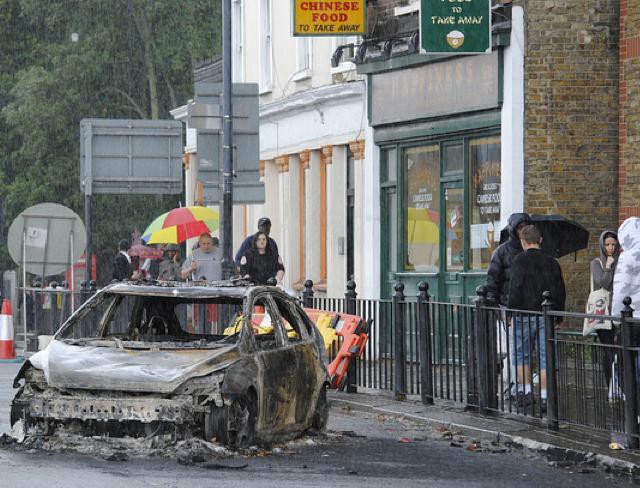This Weekend in London

After Mark Duggan was shot by police in North London, in Tottenham, four days ago, the family conducted a peaceful vigil and march to the police station (as one does in black communities around the world; standard practice in Oakland, East New York, etc.). There were discrepancies in the account of Duggan’s death, as usual. (Police said he’d shot an officer; instead, as usual, an officer apparently shot an officer.) Family and friends waited outside the police station for hours and were ignored. Later that night, a different kind of demonstration emerged, and 26 police were injured in what ensued. Over the weekend, riots and mini-riots “broke out” from Tottenham to Brixton all the way down to Oxford Circus. “Most of the looters were young teenagers, many of them girls,” says the Telegraph — interesting: how many looters were there? How many of them were girls? — and here it’s helpful to note that Tottenham has the highest unemployment rate in London. Local businesses were trashed; in pictures, demonstrators seem nearly all young and of all races. Like many episodes of unrest, this is a fairly inarticulate class uprising, with a few goons and a lot of people without jobs who are pissed off about the police shooting people. And the further you get from London, it seems, the more the riots are treated as some act of chav hooliganry; it’s paragraph 13 in the Times where Tottenham is described as a place where “a large Afro-Caribbean population has felt singled out by the police for abuse” — and Mark Duggan’s name doesn’t make an appearance until paragraph 15. Unfortunately, we don’t get many good accounts of what’s really happening, or why people are furious enough to put themselves in harm’s way, at least in part because most members of the media didn’t feel safe reporting from the area, and as well a few were attacked. (Photo by Tom Kay.)
